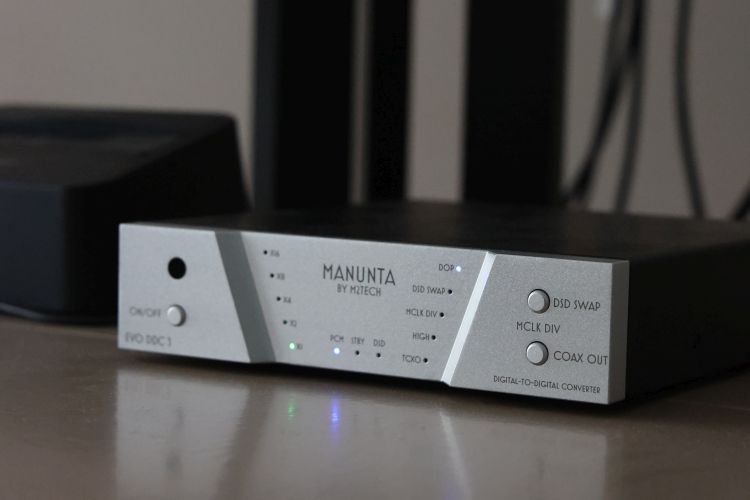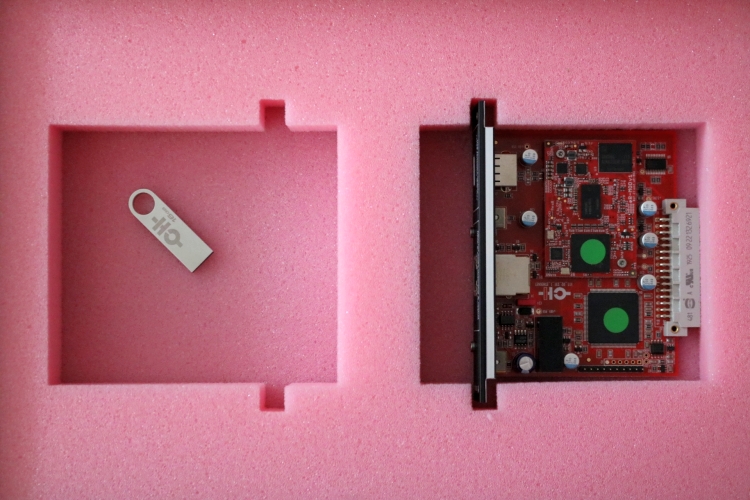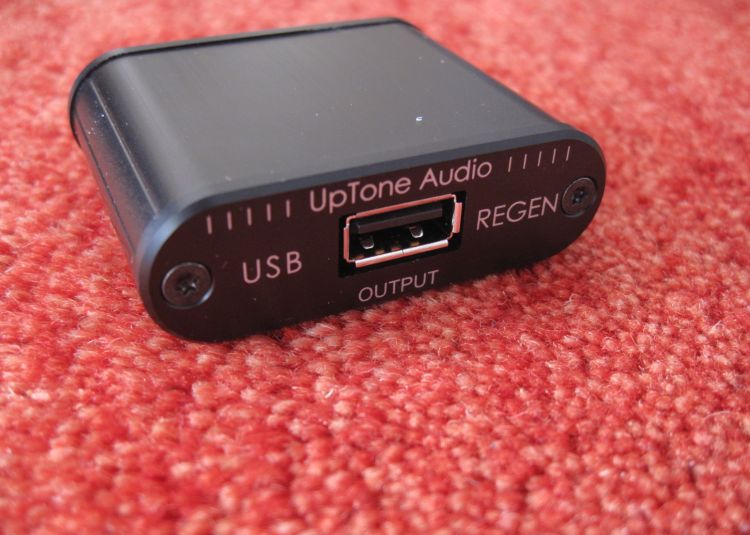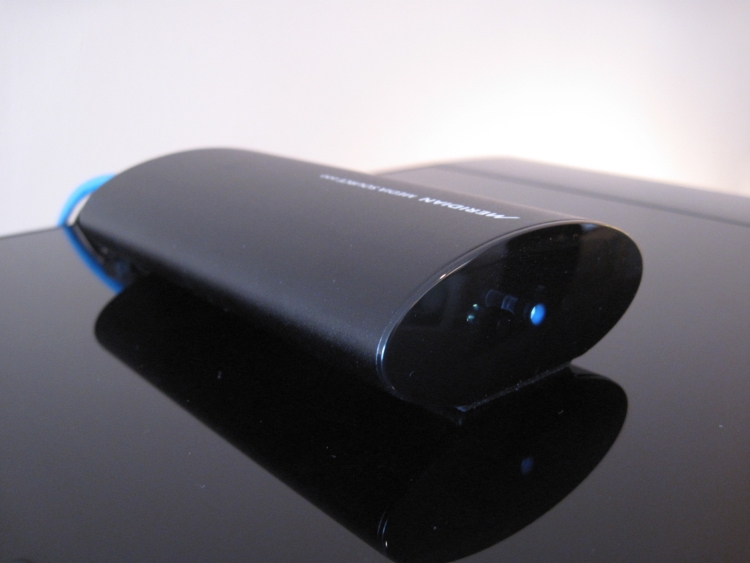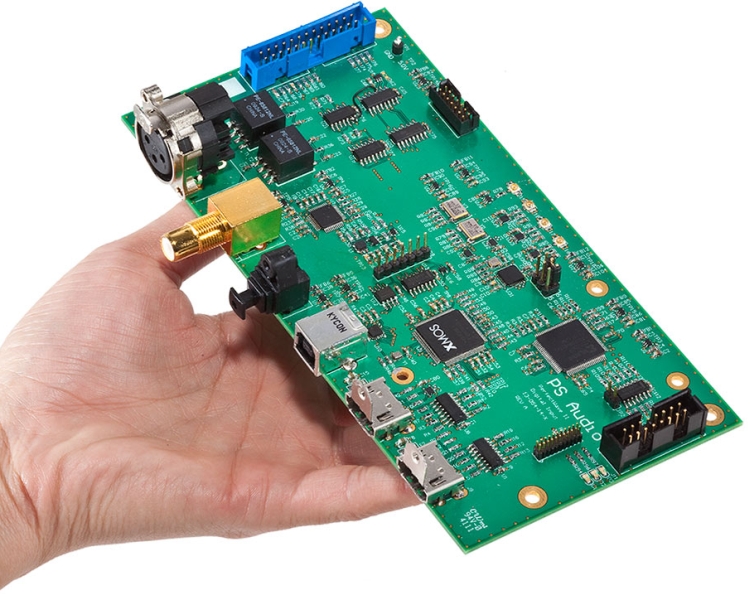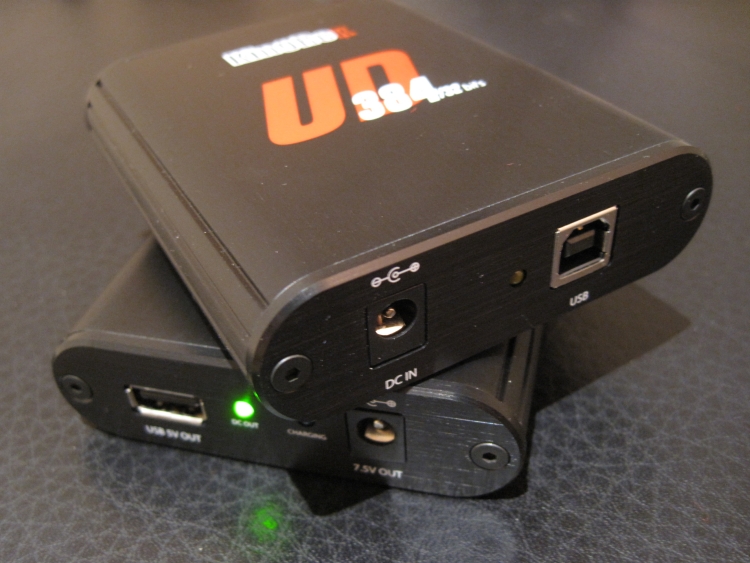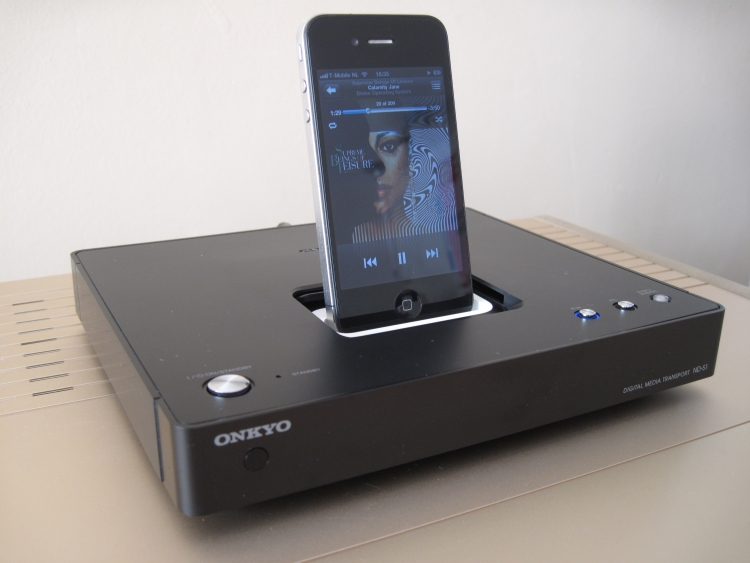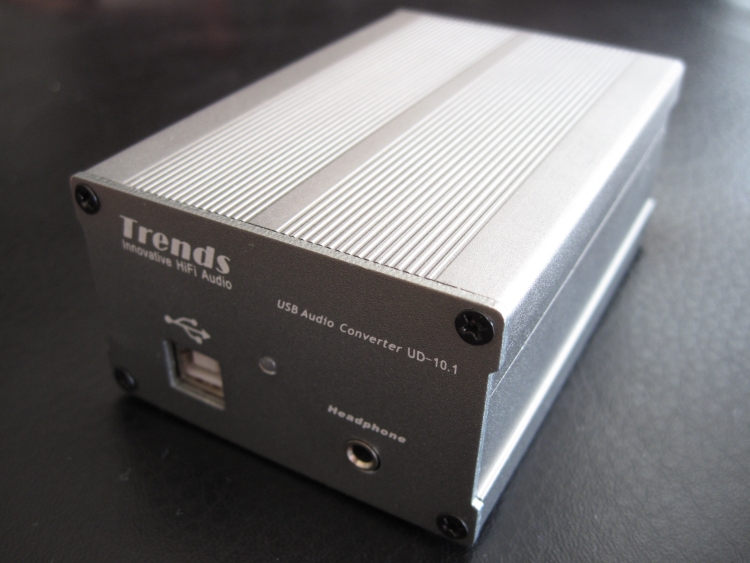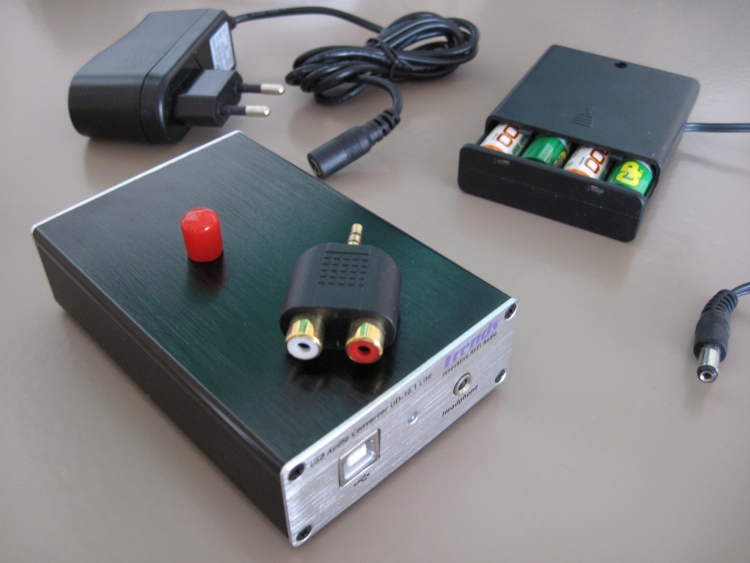
Compact, affordable USB Interface, DAC and headphone amplifier
Here is a compact, affordable USB Interface that not only interfaces between computer and DA converter, but is also a DAC and offers a headphone output that is bi-useable for regular analog output by using the supplied jack-cinch adapter.
Review sample supplied directly by manufacturer Trends
Retail price approximately 100 euro (battery pack optional for 15 euro)
The Trends UD10.1 Lite is a stripped-down version of the UD10.1, hence the “Lite” in its name. What it lacks compared to its sibling is BNC and AES outputs and it has a simpler clock. Not only does this interface offer a Burr-Brown PCM2704 converter for analog output, it also offers connection of an optional Charger Kit, consisting of a plastic container and 4 chargeable AA penlites. A charger is also included. The battery pack has an on-off switch and that’s important because one charge will give you a quoted 16 hours of playback time. While that’s certainly enough for any listening session (surely I haven’t ever exceeded that;-) it would nevertheless be unfortunate if you forgot to switch it off and have no juice left for the next day. But even that’s covered because the UD10.1 also works on USB bus power. My review sample came complete with the Charger Kit.
In addition to the analog output it also offers Toslink but given my experiences with that standard, I chose to leave that option open. Take note though: the UD10.1 Lite maxes out at 16 bits and takes sample rates up to 48khz only.
By now I’m sure you are curious as to how the bus power compares to battery power and how the UD10.1 Lite performs overall. I’m sure I am!
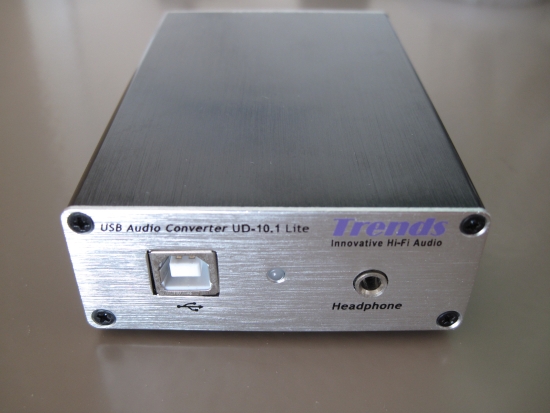
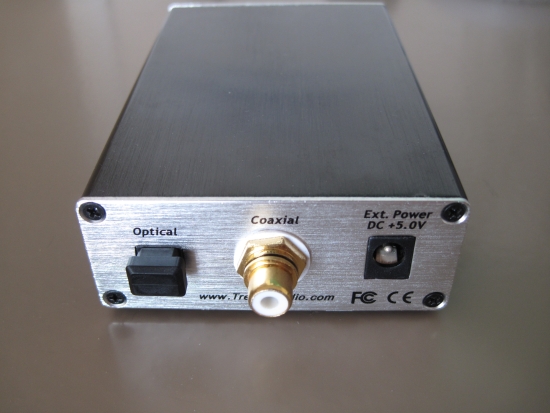
Installation was painless. I just plugged it in, Windows XP did a search and came up with an appropriate driver. The UD10.1 Lite shows up as “USB Audio Dac” and can be directly selected in Winamp and many other playback applications.
I started off with the plain USB bus-power setup. Cold from the box and connected in the usual fashion (all parameters are always the same: positioned on the floor, same computer and playback software, same no-name brand USB cable I always use, same RG59 coaxial out into the Levinson no.360S DAC etc.) in my setup, the UD10.1 Lite performed almost in an anonymous fashion. It was very unassuming. The sound had no obvious plus or downsides but perhaps it was just a bit bland. Compared to the HiFace EVO, it did indeed meet its match on many accounts. Perhaps the UD10.1 was a little bolder sounding but otherwise it just couldn’t keep up in terms of bass extension, clarity, subtlety, focus, rhythm, and soundstaging. But that’s only to be expected because the EVO costs roughly four times the UD10.1 Lite’s admission price. Not content with these results, I left the UD10.1 Lite switched on for a day and resumed listening. Alas, no difference. The UD10.1 Lite, on USB bus power, sure is a neutral performer but none of its qualities really stand out.
Compared to the KingRex UC192 (which costs roughly the same) the UD10 had better bass and dynamics but still portrayed a certain blandness. It was like the musicians hadn’t slept well and were tired and the performance just wasn’t anything special. The KingRex, with ASIO drivers at least, excels in ambiance and produces a very involving sound even if it lacks some attack and drive in the bass. Still, the UD10.1 Lite was already much better than the computer’s built-in coaxial output in that it was more lively and more rhythmic.
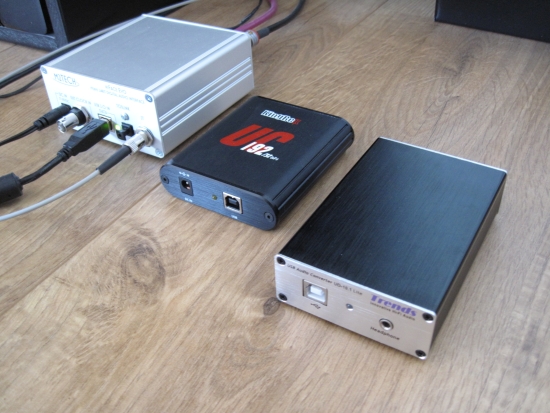
Battery Power Supply
Those who have read more of my reviews, know that I love my BPS’ses. My Jef Rowland preamps and power amps alike, all have Battery Power Supplies. A BPS can sure bring many advantages but it’s not always better in all areas. For example, switching the Rowland amps to pure battery operation makes for a super-smooth and un-electronical, relaxed and freely floating soundstage but at the expense of some drive and attach in the bass. This leads me to switch on and off the BPSes depending on my mood.
So how does the UD10.1 Lite perform with batteries? The manual clearly states to be careful with this. Before connecting an external power supply (and I suppose the battery pack counts as that) you need to unplug the USB cable. Otherwise, the Burr-Brown converter might get damaged. To me, this sounds strange. Couldn’t they have implemented a safety circuit inside? I mean, these kinds of mistakes are all too easy to make. Maybe that’s a cost consideration, who knows. But I wasn’t about to make this mistake of course. After unplugging the USB cable, I plugged in the batteries and switched them on. Nothing happened. Then I inserted the USB cable. Again nothing happened. Quickly I unplugged the USB cable and measured the batteries. Indeed, they had been depleted. A measly 2,7 volts were available. I just assumed that they had been fully charged but you know what they say about assumption… So, I charged the batteries with the supplied charger but since I would have to wait for them to be charged, I resumed testing, with an AC adapter this time.
External adapter instead of USB Bus power
An external power supply wasn’t in the package (there’s an optional PW-10 for that) but I dug up a linear 350mA 5-volt power supply. After unplugging the USB cable and plugging in the power supply, the blue led comes on. So far so good. But after inserting the USB cable, the UD10.1 just isn’t recognized in Windows anymore. Unplugging the USB cable and power supply and reinserting only the USB cable it works again. I tried it three times, with longer waiting times but I had no luch with this external power supply. I measured its output and lo and behold: the specified 5 volts turned out to be 9,7 volts! This was one seriously mislabelled power supply! I then dug a little deeper and found a bunch of other power supplies. Not wanting to take any more risks I chose a regulated universal supply. Its 4,5 and 6-volt settings came closest to the preferred 5 volts. I checked the polarity and measured its output and the specified 4,5 volts turned out to be 5,1 volts. Perfect! This time, the external power supply did work. It made for a smoother sound with less dryness and more subtlety. Now it started to sound like music! But before I could start enjoying myself, the sound switched off. And on again. And off again. Now I became paranoid and quickly checked the UD10.1 with USB power. That still worked. Then I tried another power supply, again a universal stabilized version with 5 volts output. But the same happened. Would I have damaged the device with the 9,7 volts of that first wrong power supply? Surely a few seconds should be sustainable? Or would it be an interaction between my USB port and the power supply?
Analog line out
While waiting for the batteries to be charged I proceeded to listening to the built-in DAC and its analog output. At first, I wanted to compare its output by means of headphones but my PC has no headphone output. Only a built-in RealTek HD line out. So I compared the two line outputs using my Harman Kardon GLA55 active speakers. There is a huge difference between these two outputs. While the built-in Realtek output is very smooth and gentle, it is also very undynamic and lacks drive and speed. The Trends UD10 in comparison sounds very lively, dynamic and more enthusiastic. But it is also a little less refined and can sound slightly rough. Which sounds better overall is totally up to you, your setup and your taste. I would choose the Realtek output since the Harman Kardon speakers are already very lively and forward and they can use a little softening. When connected to more balanced speakers the situation is entirely different and it becomes clear that the Realtek output is just way too smooth for its own good, masking rhythm and dynamics and blurring pace. Even for me, it is too smooth.
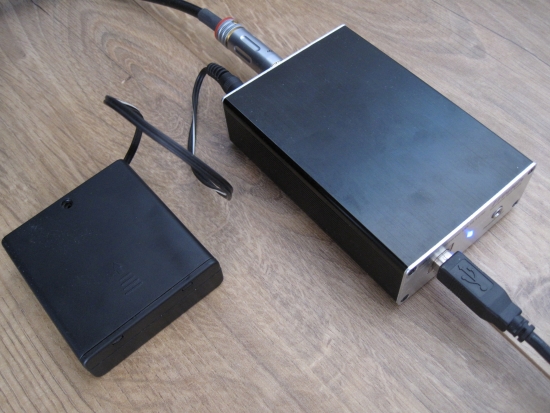
Back to battery power
After the batteries were charged I resumed listening to the UD-10.1 Lite on battery power. Like the sound using an external power supply, battery power did the UD10.1 Lite a world of good. The sound now was full, slightly relaxed but very clear, well-paced and dynamic. It wasn’t extremely smooth but nonetheless much more fluid than when using USB bus power. In fact, I didn’t feel that the batteries made the sound any slower than when using a DC external power supply. Still, the problem of sound cutting out intermittently was present but it still allowed me worthwhile listening. As I mentioned in the beginning, BPSes can often make the sound a little slower and less dynamic and even the HiFace EVO is affected by this. But the UD10.1 Lite isn’t restrained by the batteries at all. In fact, its sound only benefits from it. Going back to the EVO for comparison it turns out that the UD10.1 Lite still lags behind on two terrains, namely subtlety and treble fluidity/smoothness but overall it now has a very good sound balance. It is slightly forward but very dynamic, enthusiastic and lively at it.
A comparison from memory, to the similarly-priced HiFace (not EVO) would put the two interfaces neck to neck, with the HiFace winning for refinement in the treble and the UD10.1 Lite winning for its bigger and beefier bass. Especially with the UD10.1 Lite running in battery mode, I’d have a hard time choosing between the two.
Conclusion
The UD10.1 Lite is a great converter but de to its somewhat rough sound performance, I wouldn’t call it an audiophile-quality device per se. Still, its neutral sound, low price, versatility, and easy setup should surely be enough for many prospective buyers. Given what I’ve heard so far, I’d personally be curious to see what its more elaborate and more expensive sibling, the UD10.1 (not lite) is capable of.
